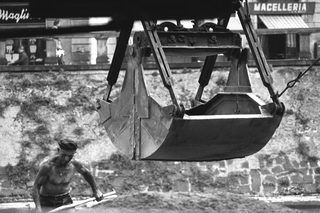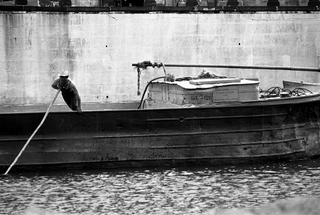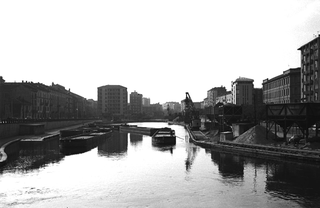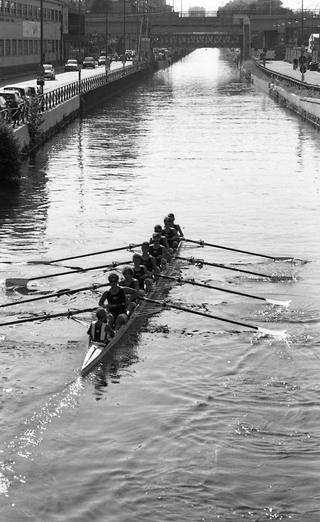"None of today’s young Milanese would believe that just over fifty years ago, in the very spots where they now struggle to park their compact cars, barges over twenty meters long once docked with ease—laden with marble, granite, or timber, having traveled lock by lock all the way from the shores of upper Lake Maggiore.”
(Dante Isella, La Milano dei Navigli. Passeggiata letteraria [Milan: Officina Libraria, 1987])
The Navigli are an ancient system of navigable canals that once connected Milan to the lakes and rivers of Lombardy and northern Italy. Built between the 12th and 16th centuries, they played a key role in trade and transportation, as well as in irrigating the vast plains surrounding Milan, which were used for agriculture. It was through these canals that materials such as the marble employed to build the Duomo were brought into the city. Partially still visible and, in some stretches, still navigable, the Navigli stand today as a symbol of Milanese identity, bridging history and the present.

"None of today’s young Milanese would believe that just over fifty years ago, in the very spots where they now struggle to park their compact cars, barges over twenty meters long once docked with ease—laden with marble, granite, or timber, having traveled lock by lock all the way from the shores of upper Lake Maggiore.”
(Dante Isella, La Milano dei Navigli. Passeggiata letteraria [Milan: Officina Libraria, 1987])
The Navigli are an ancient system of navigable canals that once connected Milan to the lakes and rivers of Lombardy and northern Italy. Built between the 12th and 16th centuries, they played a key role in trade and transportation, as well as in irrigating the vast plains surrounding Milan, which were used for agriculture. It was through these canals that materials such as the marble employed to build the Duomo were brought into the city. Partially still visible and, in some stretches, still navigable, the Navigli stand today as a symbol of Milanese identity, bridging history and the present.




Social
Contatti
archivio@carloorsi.com